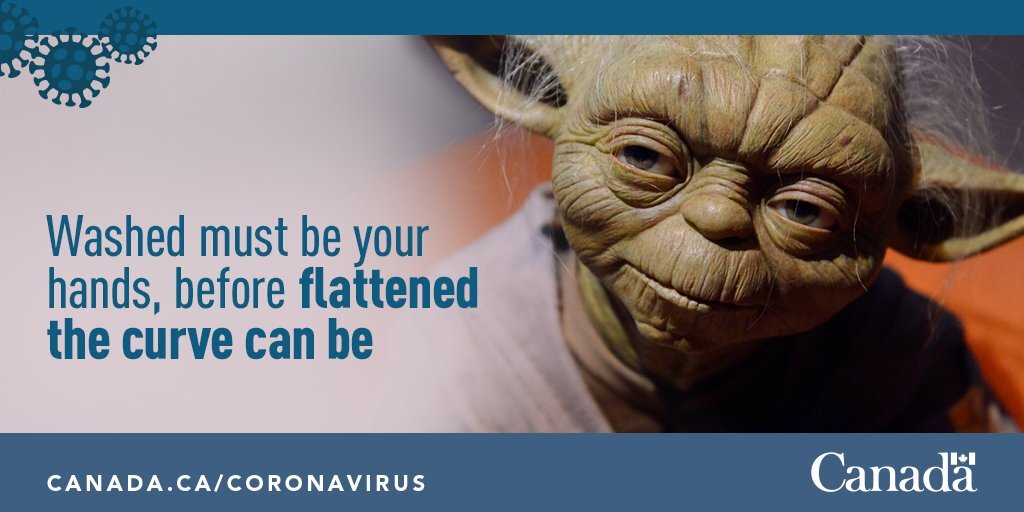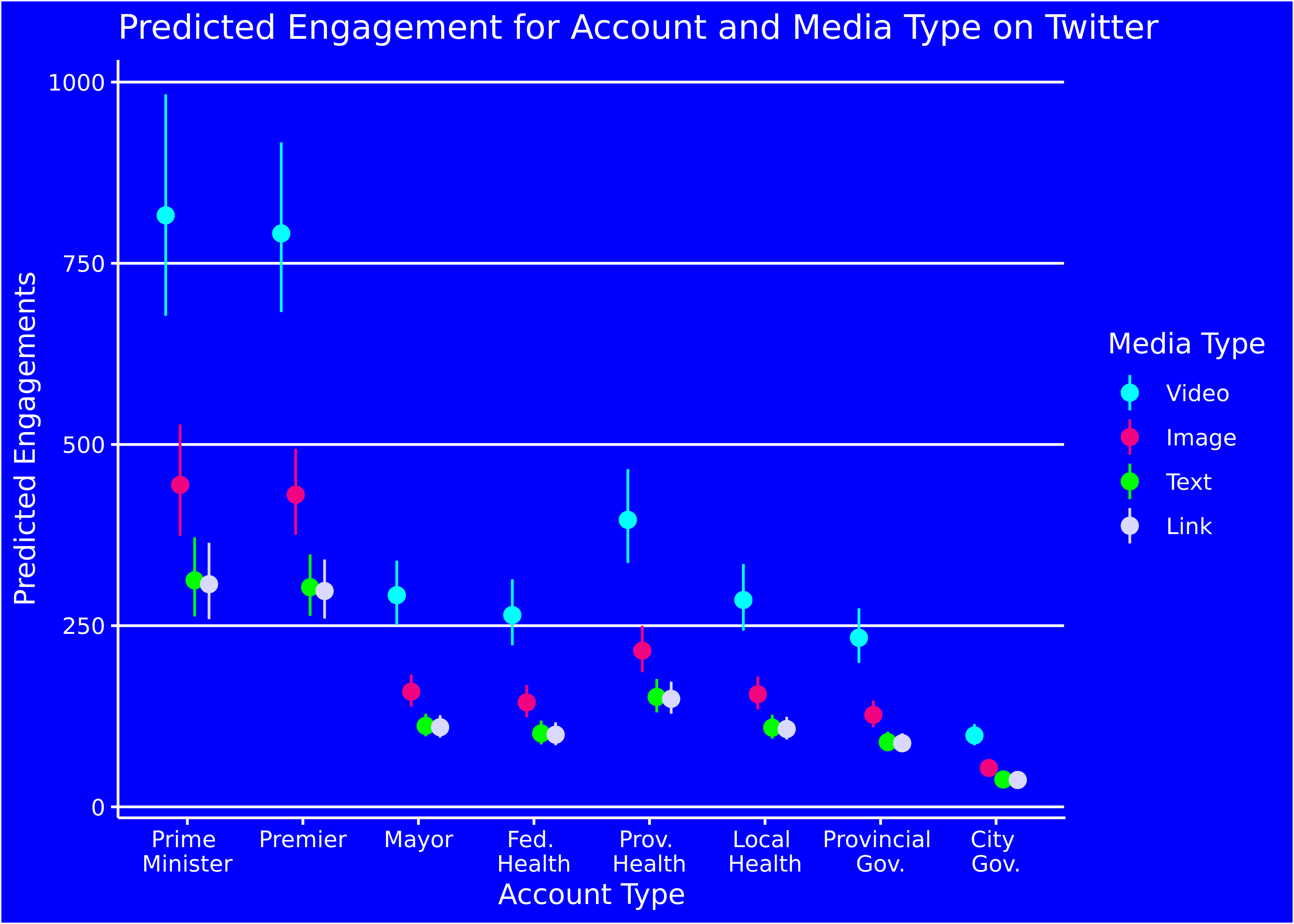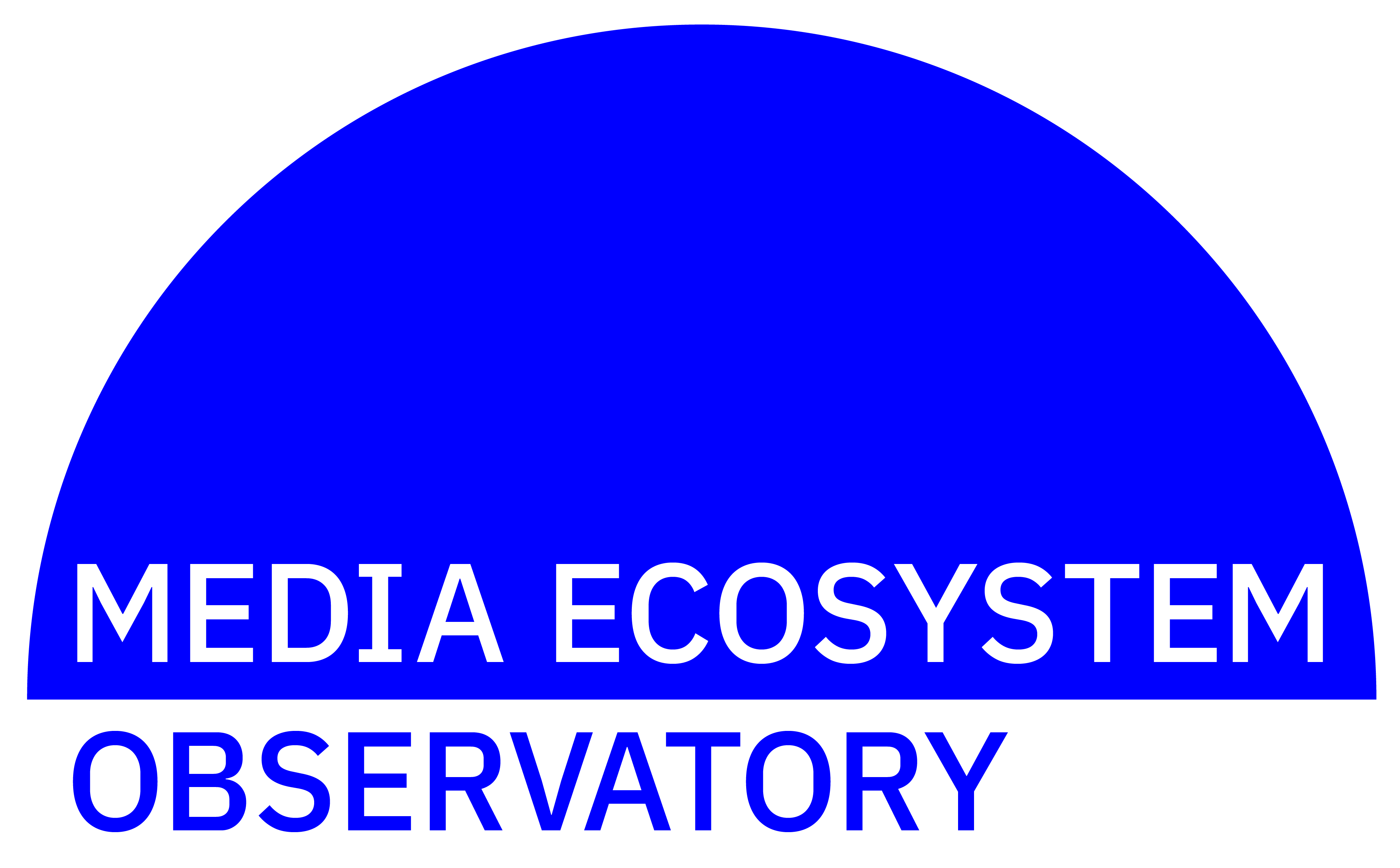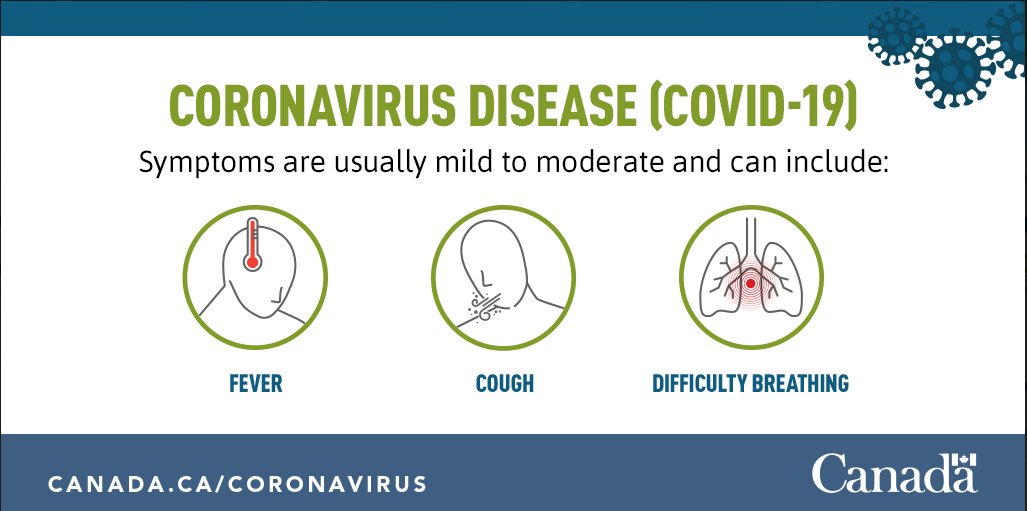Can Yoda help governments fight the pandemic?
Lisa Teichmann 08.12.20.In a new paper from the Media Ecosystem Observatory “Public Health Communication and Engagement on Social Media during the COVID-19 Pandemic” (available in preprint here), we find that indeed the force may be with public health officials who adhere to certain communication strategies, some common sense and others counter-intuitive. The spread of COVID-19 has been met with an unprecedented and ongoing effort on the part of governments to communicate crucial public health information and policy directives to their publics. With rapidly evolving conditions and policies tailored to specific places and times, it’s important that governments reach as broad an audience as possible, especially as misinformation about the novel coronavirus continues to spread on social media, changing attitudes and behaviours.
 The Health Canada and Public Health Agency of Canada published this graphic on May 4th 2020 alongside a text saying “Unwashed hands are the path to the dark side. Unwashed hands lead to germs; germs lead to illness; illness leads to suffering. This #StarWars day and every day, #washyourhands frequently for at least 20 seconds with soap and water. #MayThe4thBeWithYou #COVID19.” It received almost ten times more likes and shares than expected!
The Health Canada and Public Health Agency of Canada published this graphic on May 4th 2020 alongside a text saying “Unwashed hands are the path to the dark side. Unwashed hands lead to germs; germs lead to illness; illness leads to suffering. This #StarWars day and every day, #washyourhands frequently for at least 20 seconds with soap and water. #MayThe4thBeWithYou #COVID19.” It received almost ten times more likes and shares than expected!
Spearheading public health communication responses globally are numerous heads of state and region. In Canada, figures like the Prime Minister Justin Trudeau, Premiers Doug Ford, and François Legault speak to millions of Canadians daily, in press conferences and social media posts. They are shared, linked to, discussed and liked across various social media platforms. These platforms in particular are integral mediators in the transfer of information about the pandemic from governments to citizens.
The Canadian government recognized this early on, promising to “expand existing communications and public education” in order “to ensure Canadians get trusted and accurate information”, with $50 million dedicated to communications capacity and public education efforts.” But what constitutes effective messaging?
In the wake of the spread of COVID-19 the public has been faced with a wave of misinformation and the abundance of contradicting instructions led to a spike in calling for clear communication. Especially in the recent weeks when many governments implemented rules for the mandatory facemask in closed spaces that also faced a lot of anti-mask protests, health communications have become even more crucial.
In our paper “Public Health Communication and Engagement on Social Media during the COVID-19 Pandemic” (available in preprint here) we demonstrate that making strategic use of media content paired with an appropriate social media platform may encourage citizens’ engagement with government information in times of crisis. We also provide advice for how practitioners across the Canadian government may be able to focus their social media crisis communication efforts to engage as many citizens as possible.
From the beginning of the pandemic until late May we collected public health related social media posts (Twitter and Facebook) from the accounts of the Prime Minister, leaders of provincial and territorial governments, and the mayors of large cities in Canada. In our cross platform and mixed-method analysis we identify four evidenced backed lessons for practitioners seeking to maximize engagement with their public health communications:
1. Who posts is more important than what is posted.
As our figure below shows, the Prime Minister, premiers, federal and provincial health accounts are clearly ahead of other government accounts when it comes to engagement with messages on Facebook and Twitter. The heads of governments have unparalleled opportunity and responsibility to communicate health information quickly.

2. Say it simple and clear!
We found that the most effective messages tend to be the simplest. Direct personal appeals from leaders to their constituents are among the most engaged with public health communications we observe, as in this tweet:
Stay home. It doesn’t matter that the weekend’s almost here - if you choose to gather in groups or hang out with your friends, you’re putting yourself, those around you, and our health care workers at risk. So take this seriously. Do the right thing and stay home this weekend. (@JustinTrudeau)
3. Creativity, media and media quality matters.
Be it calling out the dark side (of inadequate social distancing and hygiene), colorful explanations of best practices, or even summoning an army of celebrity influencers, public health communicators can assure their messages reach individuals far, far away by sharing high quality, creative content.
Symptoms of #COVID19 may take up to 14 days to appear and include fever, cough and difficulty breathing. Contact a health care professional if you have travelled recently and develop these symptoms. #coronavirus
http://ow.ly/cinJ50yDKDj
(@GovCanHealth)
4. Platform matters! Media matters!

While who posts matters more, what media is posted matters too. But the optimal mix depends on the platform - on Twitter, public health officials can maximize engagement by sharing videos or infographics, while these media types are actually penalized relative to text-only statuses on Facebook.
Back to our question:
Yes, Yoda can help governments to fight the pandemic! To do so, policy makers need to take into consideration which media and content is effective on Facebook as compared to Twitter and develop specific strategies to reach citizens in times of a health crisis.

